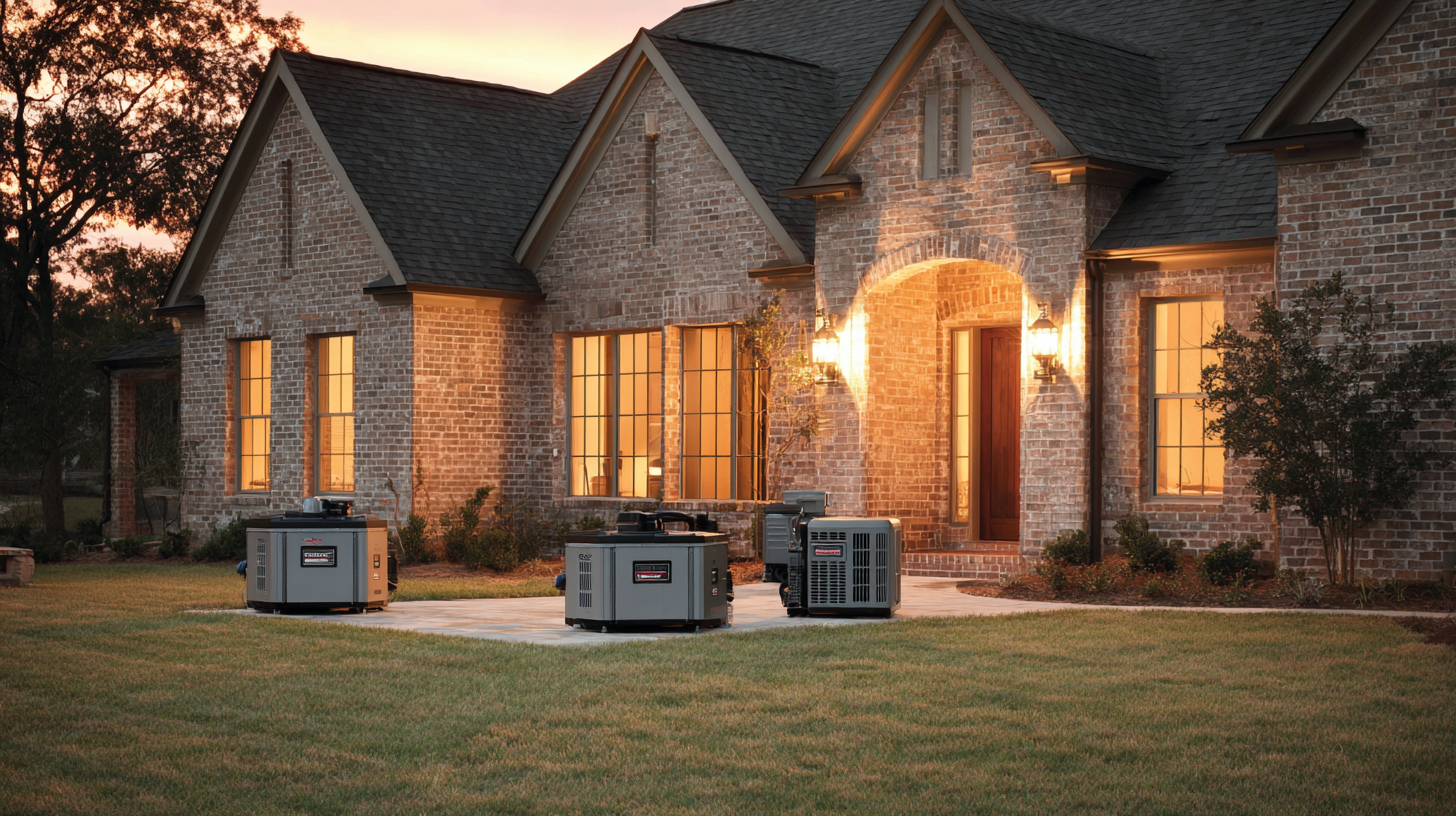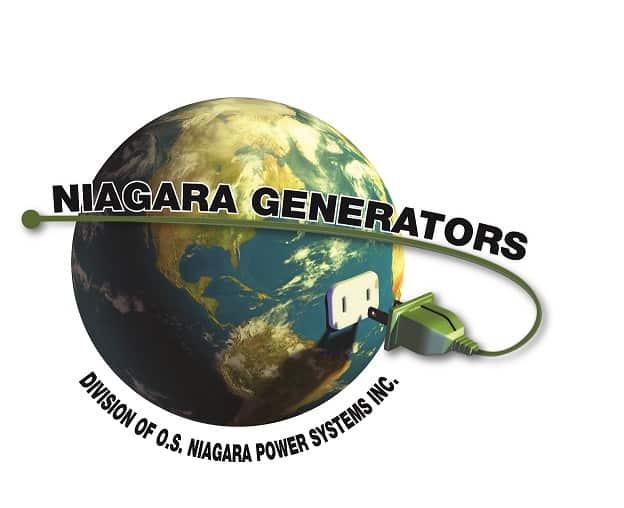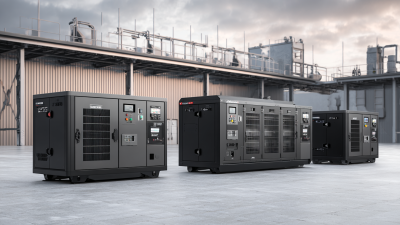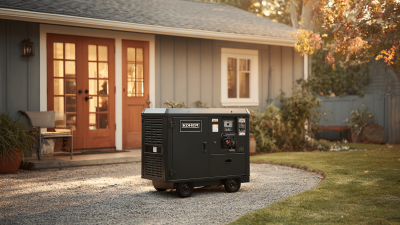The Ultimate Guide to Choosing the Right Home Backup Generator for Your Needs
When it comes to ensuring the safety and comfort of your home during power outages, understanding how to choose the right home backup generators is essential. With a myriad of options available on the market today, selecting the perfect generator for your specific needs can feel overwhelming. This guide aims to simplify the decision-making process by offering clear tips and insights tailored for homeowners. We'll explore key factors such as power output, fuel type, and runtime, along with practical advice to help you identify the generator that best suits your lifestyle and budget. Whether you're looking to power essential appliances or provide full home coverage, the right home backup generators can provide peace of mind and security in uncertain times. Let’s dive in and empower you with the knowledge to make an informed choice.

Understanding Your Power Needs: Assessing Wattage Requirements for Your Home
When choosing the right backup generator for your home, understanding your power needs is crucial. Assessing wattage requirements involves evaluating the appliances and systems you rely on during an outage. Start by listing essential devices—such as refrigerators, medical equipment, heating systems, and electronic devices—and note their wattage ratings. This information can typically be found on the appliance labels or in the owner's manual.
Once you have a comprehensive list, you can calculate your home's total wattage needs. Consider both the starting wattage (the surge power required to start appliances) and the running wattage (the power needed to keep them running). A generator should provide sufficient starting wattage for all your essential appliances combined, while still being able to handle the running wattage comfortably. By clearly assessing your wattage requirements, you can select a generator that meets your needs, ensuring that you maintain power during outages without unnecessary overspending on excess capacity.
The Ultimate Guide to Choosing the Right Home Backup Generator for Your Needs
| Power Requirement (W) | Recommended Generator Size (kW) | Common Appliances | Estimated Runtime (hours) |
|---|---|---|---|
| 1,500 | 1.5 | Refrigerator, Lighting | 15 |
| 3,000 | 3 | Refrigerator, Lighting, Sump Pump | 10 |
| 5,000 | 5 | Refrigerator, HVAC, Lights | 8 |
| 7,500 | 7.5 | Refrigerator, HVAC, Lights, Washer | 6 |
| 10,000 | 10 | All Essential Appliances | 5 |
Exploring Different Types of Home Backup Generators: Portable vs. Standby
When it comes to selecting a home backup generator, understanding the differences between portable and standby models is crucial. Portable generators are versatile and typically more affordable, making them a great option for homeowners who want a temporary power supply during outages. According to the U.S. Department of Energy, portable generators can provide anywhere from 3,000 to 7,500 watts, sufficient for powering essential appliances like refrigerators and heaters. However, they require manual setup and refueling, which can be inconvenient during emergencies.
On the other hand, standby generators are permanently installed and automatically kick in during a blackout, offering seamless power restoration. They usually range from 5,000 to over 20,000 watts, accommodating larger homes and more appliances. A study by the National Fire Protection Association (NFPA) indicates that standby generators are increasingly popular due to their reliability and ease of use, with a 20% increase in sales over the past five years.
**Tips:** When considering a portable generator, ensure it has enough output to support your essential devices. For standby generators, assess your home's total wattage needs and consult with a professional installer to ensure compliance with local codes and safety standards. Always prioritize generators with safety features to prevent carbon monoxide hazards.
The Ultimate Guide to Choosing the Right Home Backup Generator
This chart compares the average power output of portable generators versus standby generators, helping homeowners understand the differences in capacity when choosing a backup generator that suits their needs.
Key Features to Consider: Fuel Type, Run Time, and Noise Levels
When choosing the right home backup generator, three key features stand out: fuel type, run time, and noise levels.
Fuel type is critical as it determines both efficiency and availability. According to a report by the American Gas Association, natural gas generators are gaining popularity due to their lower emissions and fuel cost, with an average savings of 25% compared to gasoline options. In contrast, diesel generators, while powerful, can be more expensive to operate and may have limited availability in some regions.
Run time is another essential factor, especially during extended outages. A generator with a longer run time reduces the need for frequent refueling, enhancing convenience and peace of mind during an emergency. The National Electrical Manufacturers Association states that most residential generators have a run time of 8 to 24 hours on a full tank, with some high-capacity models reaching up to 40 hours under optimal conditions. It's crucial to assess your home’s power needs to choose a generator that can adequately support essential appliances over the desired duration.
Lastly, noise levels can significantly affect your quality of life, especially in suburban areas where strict regulations may apply. The Noise Pollution Clearinghouse reports that the average residential generator operates around 70-75 dB, which is about as loud as a vacuum cleaner. Investing in a generator designed for quiet operation can minimize disturbances to your household and neighbors.
Evaluating Budget Options: Cost vs. Value in Backup Generators
 When considering a
home backup generator, evaluating the
cost versus value is essential. A lower-priced generator may seem attractive, but it could lack the power output and features necessary for your needs. On the other hand, high-end models may offer excessive capabilities, driving up costs unnecessarily. Start by assessing your
power requirements during an outage—consider what appliances and systems you'll need to keep running. This preliminary evaluation will help you narrow down options that are both effective and within your budget.
When considering a
home backup generator, evaluating the
cost versus value is essential. A lower-priced generator may seem attractive, but it could lack the power output and features necessary for your needs. On the other hand, high-end models may offer excessive capabilities, driving up costs unnecessarily. Start by assessing your
power requirements during an outage—consider what appliances and systems you'll need to keep running. This preliminary evaluation will help you narrow down options that are both effective and within your budget.
Tips: Look for generators that offer a good balance of price and wattage output. You may find that models with slightly higher initial costs provide better
fuel efficiency and durability in the long run. Additionally, consider maintenance costs; some models may have lower upfront costs but could incur higher servicing expenses over time.
Another factor to weigh is warranty and support services. A generator that offers a longer warranty period can be worth the investment, as it indicates confidence in the product’s longevity. Research customer reviews focusing on reliability and ease of use, which will provide insights into whether you’re getting
good value for your money. By combining these evaluations, you can make a smarter investment in your home’s backup power solution.
Installation and Maintenance Tips: Ensuring Longevity and Reliability of Your Generator
When it comes to ensuring the longevity and reliability of your home backup generator, proper installation plays a crucial role. First, it's vital to select a location that is dry, well-ventilated, and away from windows to minimize noise and exhaust fumes. Ensure that the generator is mounted on a solid, level surface that can withstand potential vibrations. Professional installation is highly recommended, as certified technicians can guarantee that all electrical connections are made safely and in accordance with local codes. This not only enhances safety but also optimizes the performance of the generator during power outages.

Maintenance is equally important to extend the life of your generator. Regularly scheduled checks can prevent minor issues from escalating into significant problems. Start by changing the oil every 50-100 hours of operation and replacing the air filters as needed. It's also wise to run the generator monthly to help lubricate the internal components and ensure it is ready when needed. Keep an eye on the battery as well; a weak battery can be a major hindrance during an outage. By following these installation and maintenance tips, you can ensure that your generator remains a reliable source of power for years to come.


